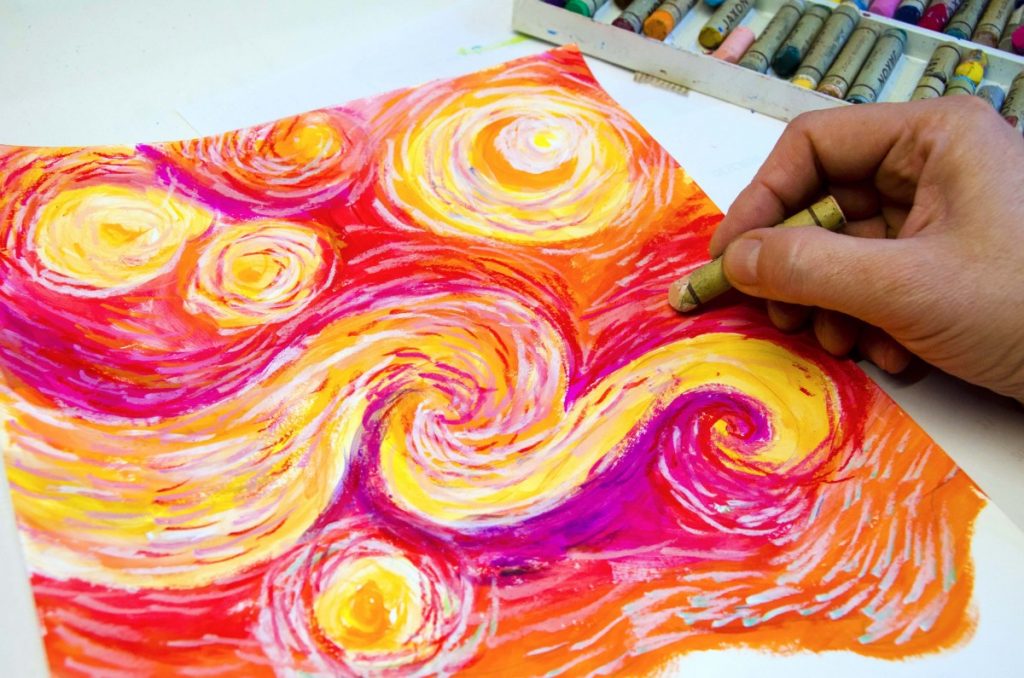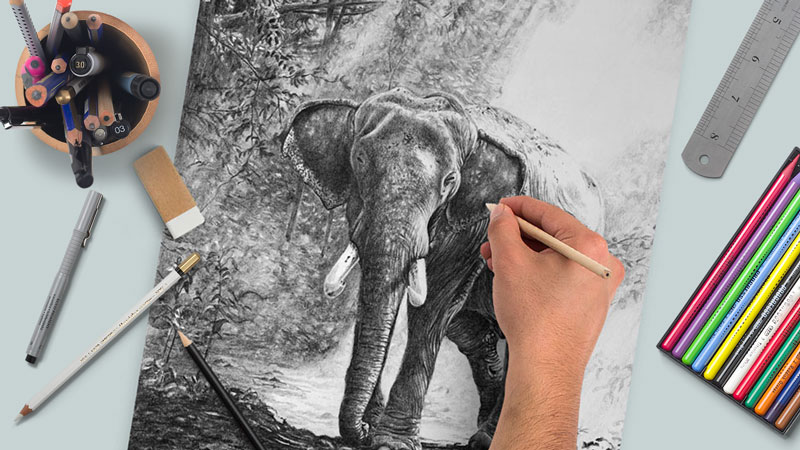Curriculum Intent
Within Art we encourage our learners to work creatively as both leaders and as part of a team in order to meet the needs of clients. Through our curriculum learners are encouraged to develop transferable skills such as good communication, organisation and leadership alongside their academic studies, life skills and career options.
The art curriculum meets the needs of the Art national curriculum in key stages 3 and 4 with emphasis on our 4 core pillars;


These core principles which are shared across the Art, Design and Technology faculty allow our learners to develop a whole appreciation for the design process within art and design and other related creative subjects. They provide learners with the opportunity to develop a deep understanding of analysis, design, media types, artistic techniques and the evaluation of both one’s own work and that of others.
Student Learning Journey
At KS3, in line with the National Curriculum students will:
Students will build on their creativity in order to develop their ideas. Drawing upon the work of noted artists they will increase their confidence and proficiency in a range of media. Research in to artists work is developed throughout Key stage 3, providing students with a broad exposure to different techniques, media and inspiration from which they can further develop their own ideas.
Analysis and evaluation of their own work and that of others is fostered throughout key stage 3 using the information gathered to provide constructive feedback and self-reflection in order to develop.
As in key stage 4, students are presented with a range of client briefs from which they begin the creative design process, recording the exciting experimentation and exploration of techniques, artistic movements and media that their journey takes to a final piece.
In Year 7 students will focus on (NB reference KS2)
- A good depth of research into the work of artists/designers/movements in order to develop knowledge, evaluation and technique.
- A range of materials including dry media and collage.
- An accurate ability to draw images with detail, effective use of tone to create 3D effects.
- The ability to develop written annotation and specific vocabulary
In Year 8 students will build on
- The ability to select, organise and present relevant information to a consistently good standard, which clearly influences your own ideas
- Experimentations using a range of materials, selection of most effective is further developed in your work
- Skilful drawing technique and use of media, good accuracy, detail, effective use of tone to create 3d effects. Written notes explain clear ideas with good use of subject specific vocabulary.
By Year 9 students will be able
- Artist research is detailed and highly relevant, a personal response shows understanding in written form whilst also visually evident in the influence of your students work
- Some of the best ideas are independently identified and developed, media used is varied, appropriate and effective
- Drawing technique and use of media is of a high standard, including accuracy in observation, demonstrated by an ability to effectively add detail and effective use of tone. Written notes explain creative ideas with accurate use of some subject specific vocabulary.
- Learners will have a detailed understanding of the job roles available within the art industry, clearly demonstrating the ability to convey this information and justify a particular role

Key Stage 4 in Art
At KS4, students will:
Students follow a vocational pathway (Btec Tech Award L1/2 in Art and design practice) in a hands-on course that will develop their creative skills and offer them an insight into what it is like to work in the art and design sector. This course enables students to develop skills across a range of art and design practices using a combination of practical exploration, experimentation and realistic vocational contexts. They will develop personal skills, such as managing creative projects, documenting progress of skills and work, responding to briefs and presenting work through a practical and skills-based approach to learning and assessment. All assessment is practical and project-driven making it relevant to the sector and building learners’ skills and portfolio of work. Assessments are designed to be engaging, open and flexible, stimulating creative ideas without restricting types or direction of student response.
How is Art taught?
Key stage 3 ADT lessons follow a similar structure across the different subjects; however each is tailored to suit the individual skills and knowledge associated with each specialism. Delivered through a carousel system, students embark on a termly delivery of each of the ADT subjects in order to allow them to experience each subject.
Each lesson begins with an entry activity designed to allow students to recall previously taught skills and content in order to embed key content. Learning within the lesson is progressive, providing students with the opportunity to develop their abilities and then apply them to written, design or practical based activities. Assessment for learning and live marking is used each lesson in order to identify misconceptions in the classroom and allow students to progress their understanding of key topics and concepts. Opportunity for experimentation, creativity and the development of new practical based skills and techniques are fostered within lessons, encouraging students to try new things and take risks. Lessons end with a review of the learning that has taken place, with the information gathered used to inform future lessons.
Home learning
Home learning activities are used to support our students' learning, providing valuable opportunities for them to conduct research into careers, practice skills or build their wider understanding of the taught topics.
In key stage 3, students are set 5 home learning activities over a term. These are set using online and paper based methods dependent on the type of activity set. Feedback is provided via google classroom.
In key stages 4, home learning time is used predominantly during the completion of assignments, when students are expected to complete a minimum of 1 hr per week. Weekly revision of the topics delivered is also encouraged in order for students to develop their knowledge and practice key skills and techniques delivered in class.

